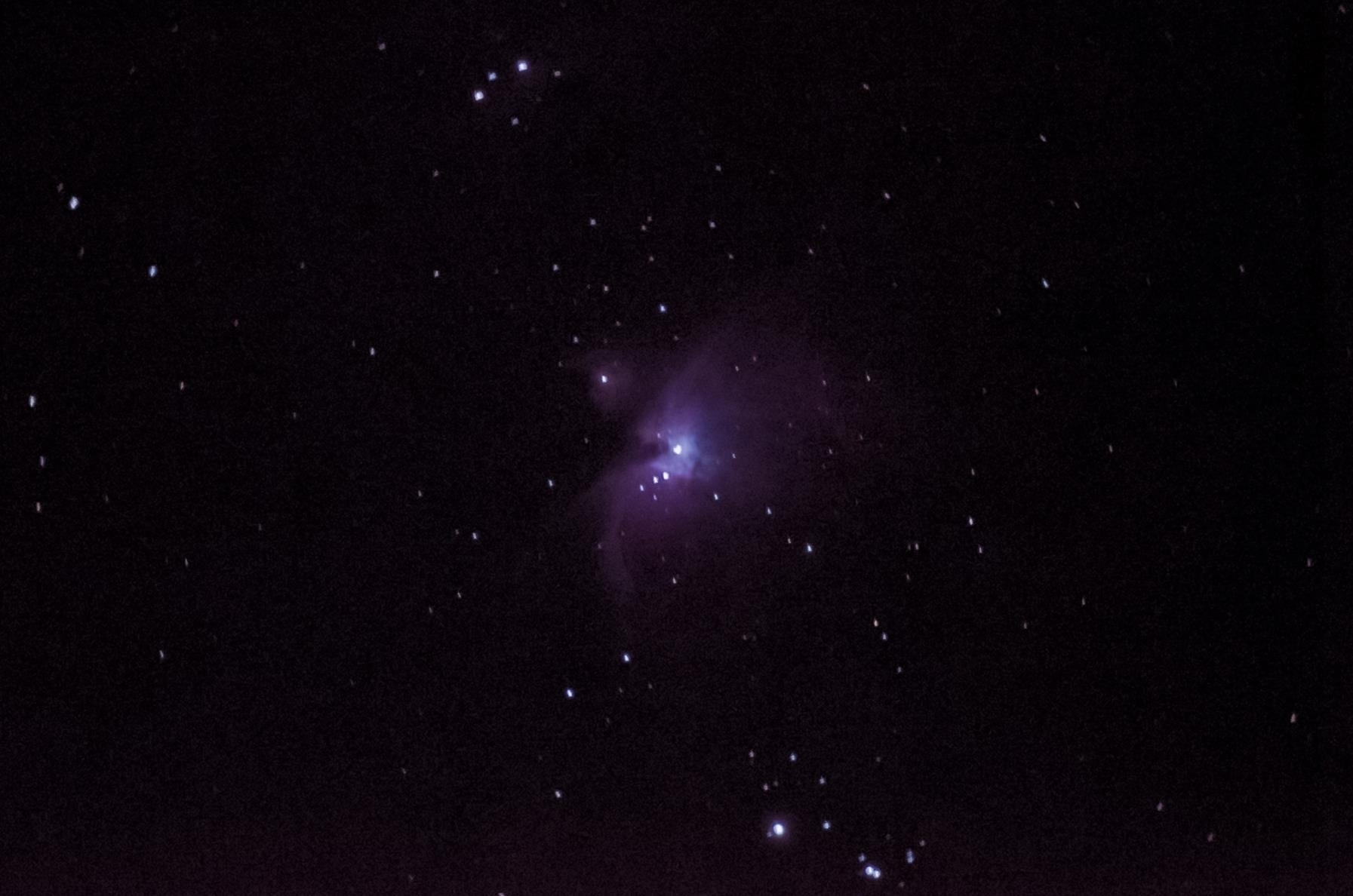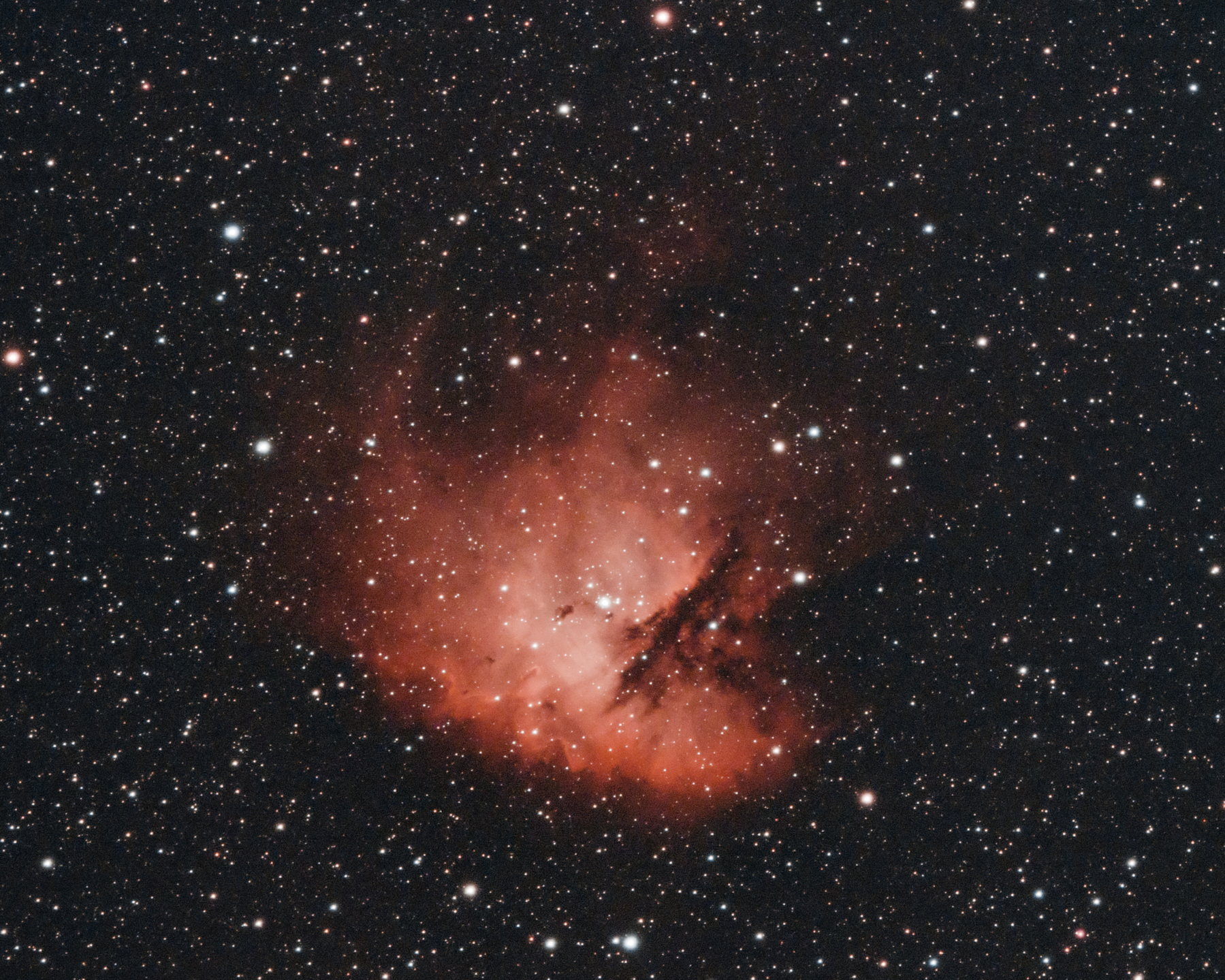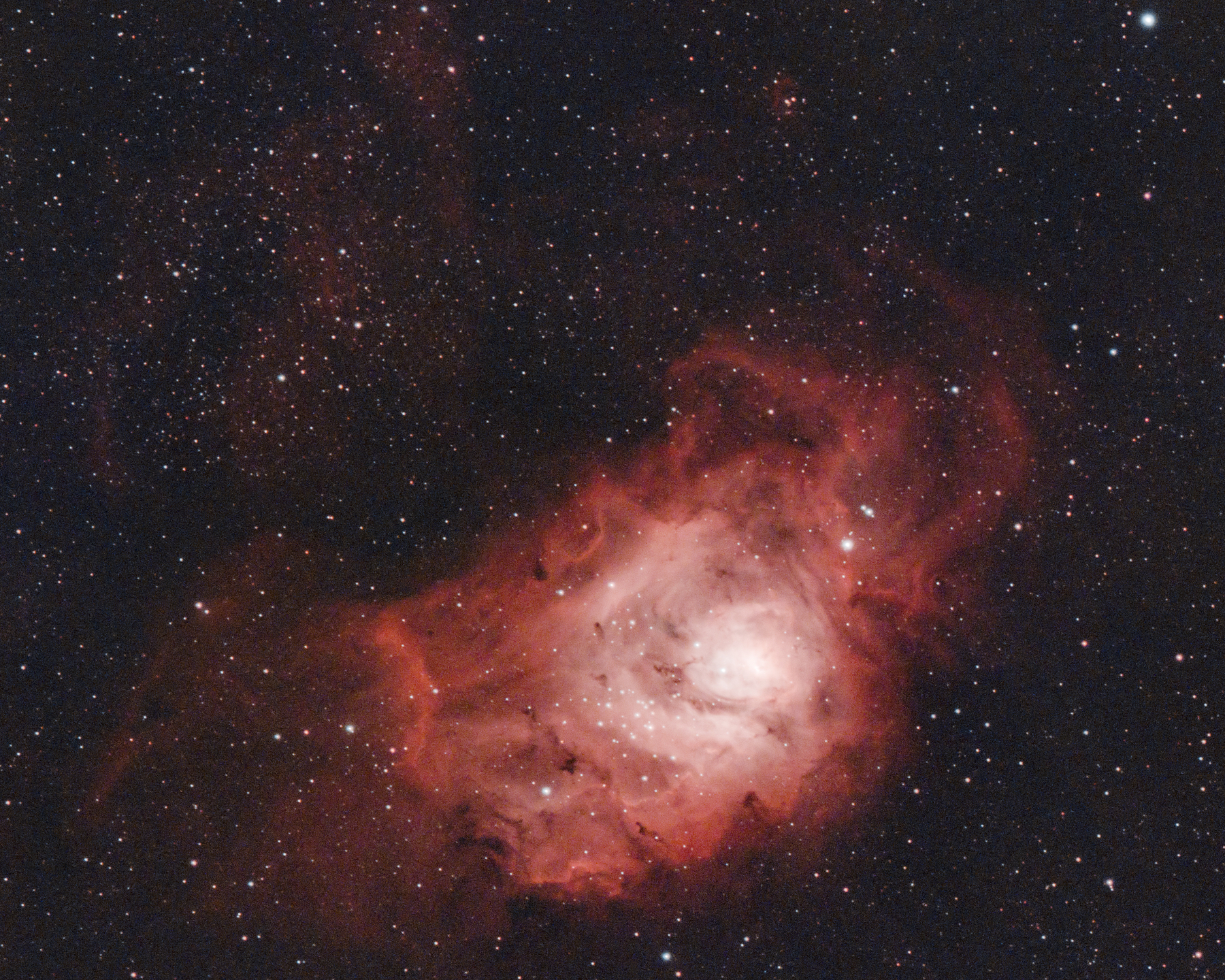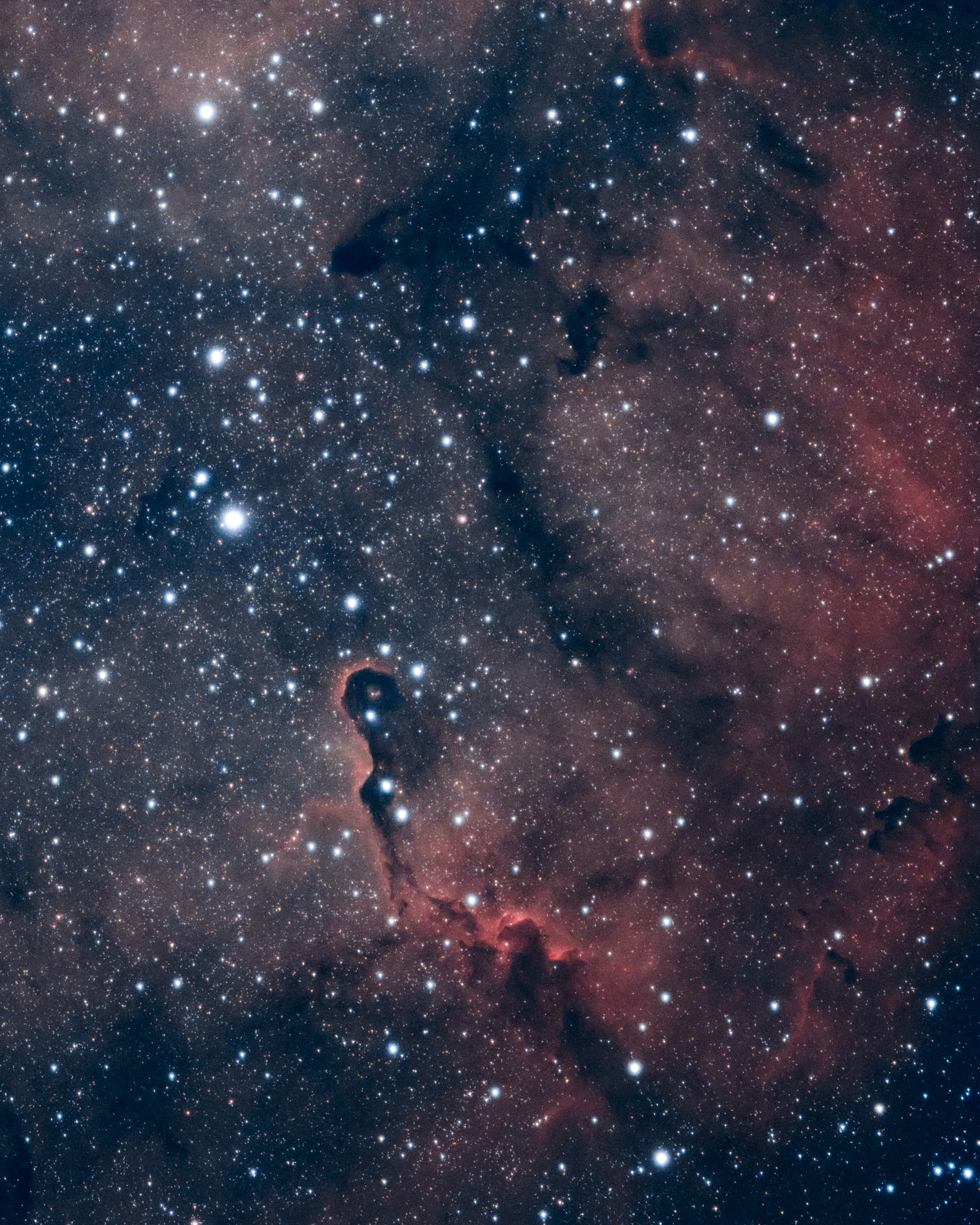nebula
2024 version of the Running Man (NGC1977) and Orion Nebula (M42). This star forming region in the sword of Orion is about 1350 light years away. The core was intentionally overexposed to bring out the dark nebulosity.
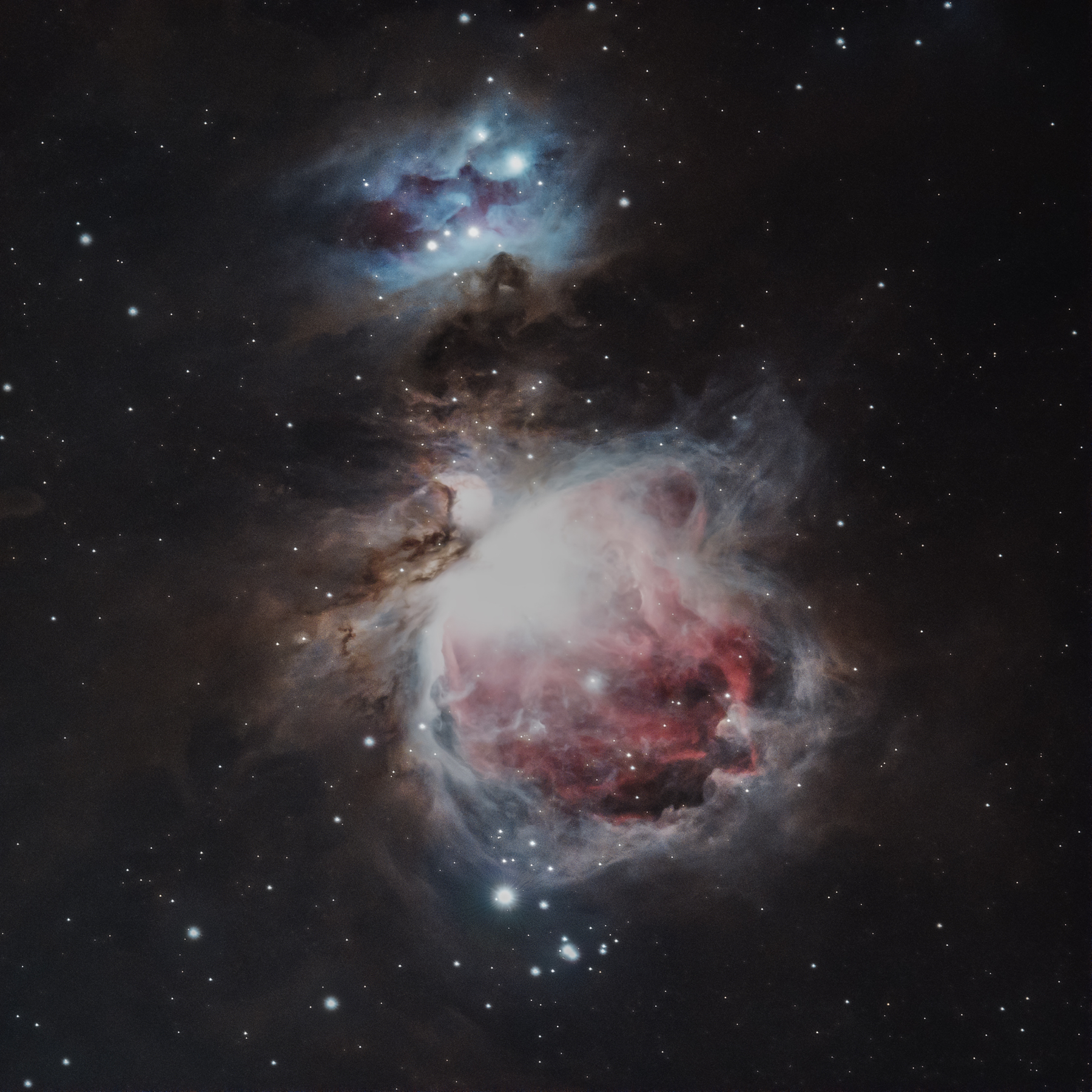
This image is a stack of sixty 1-minute exposures taken with WO Zenithstar61 telescope attached to ASI533-MC-Pro camera. Processed using SIRIL and Photoshop.
The Horsehead and Flame nebulae from Orion. The bright star (Alnitak) between them is the leftmost star in the belt of Orion. Can’t take enough photos of this view.
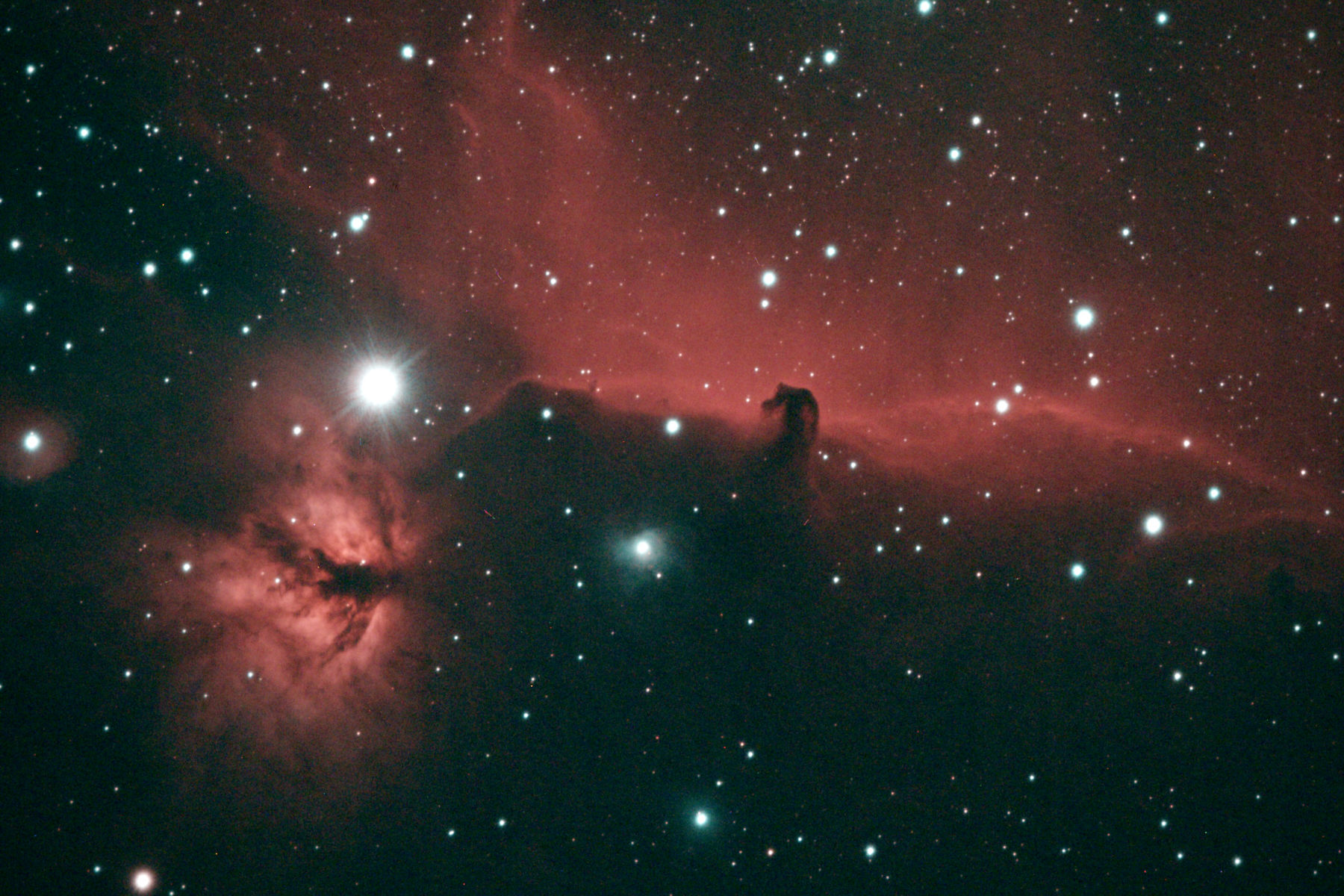
California nebula (NGC1499) from the constellation Perseus. It is about 1000 light years away from us in the Orion arm of the Milky Way. This nebula glows because of intense radiation from a super hot class O star called Menkib.
Total exposure for this photo is about 4.75 hours.
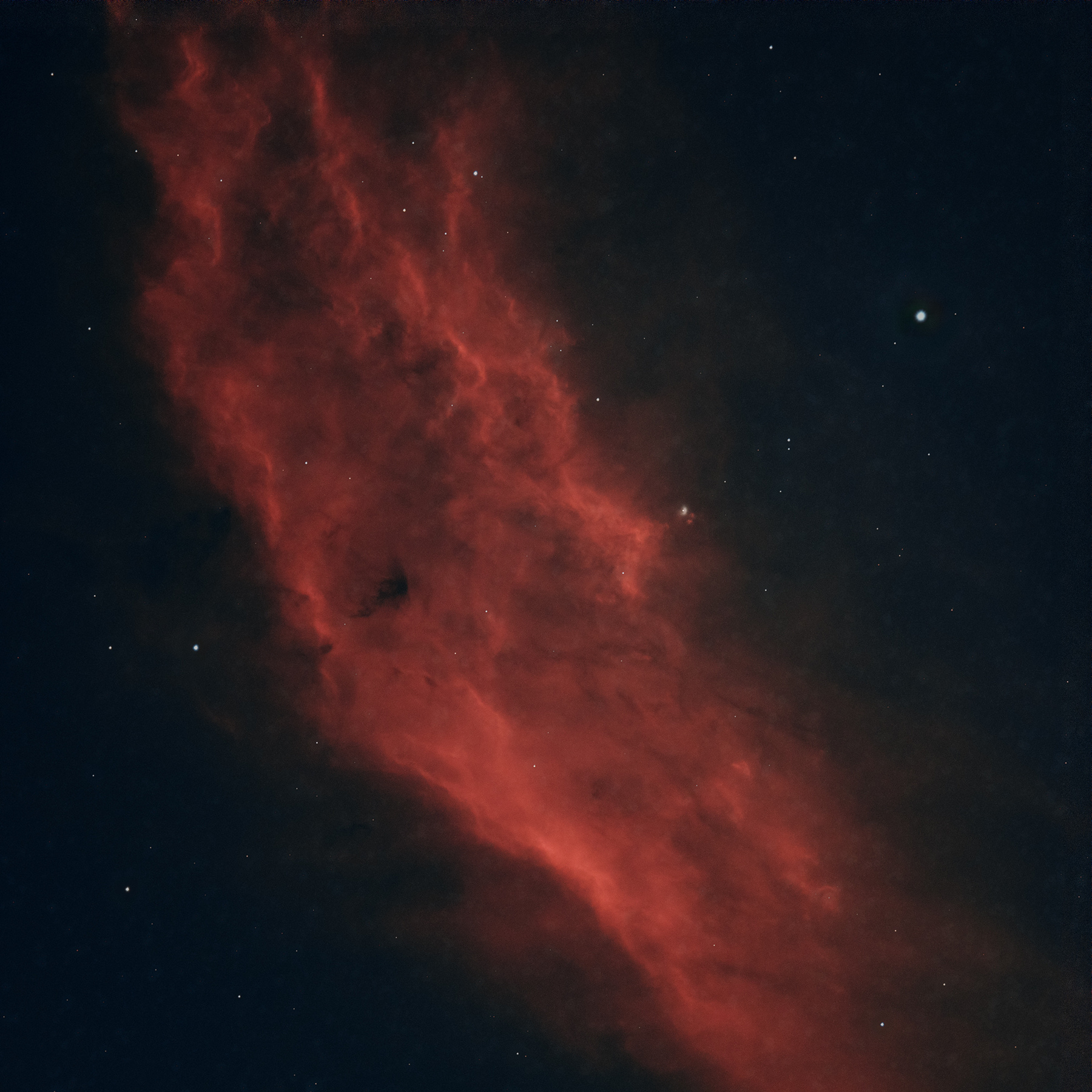
Rosette nebula - April 2023
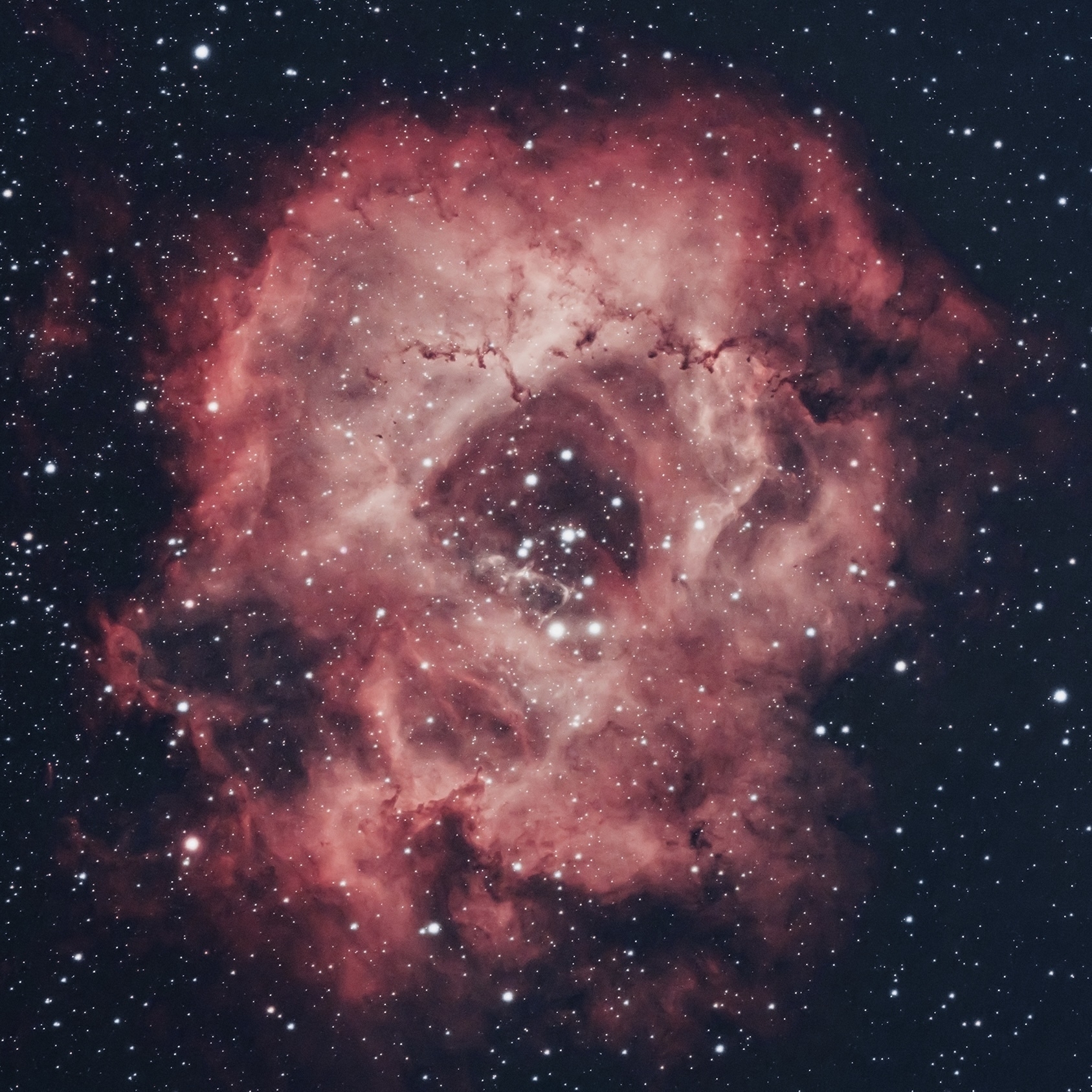
The Rosette nebula from Monoceros constellation at ~5000 light years, is one of the brightest nebula in the sky. The cluster of young stars (~4million years old) in the center provides the energy that makes this cloud glow. As always, the streaks of dark dust are the most striking features.
This image is a stack of forty 3 minute exposures (total exposure of 2 hours) taken with a 2.5 inch refracting telescope, William Optics ZenithStar 61, attached to ZWO ASI533MC-Pro camera with Optolong LeXtreme narrowband filter.
Canvas print
Got this photo of Elephant trunk nebula printed on canvas. It looks quite good considering its big size - 20x30 inches. Wasn’t sure how it will turn out. Last week, it was also featured on this website. They wrote such a nice description.
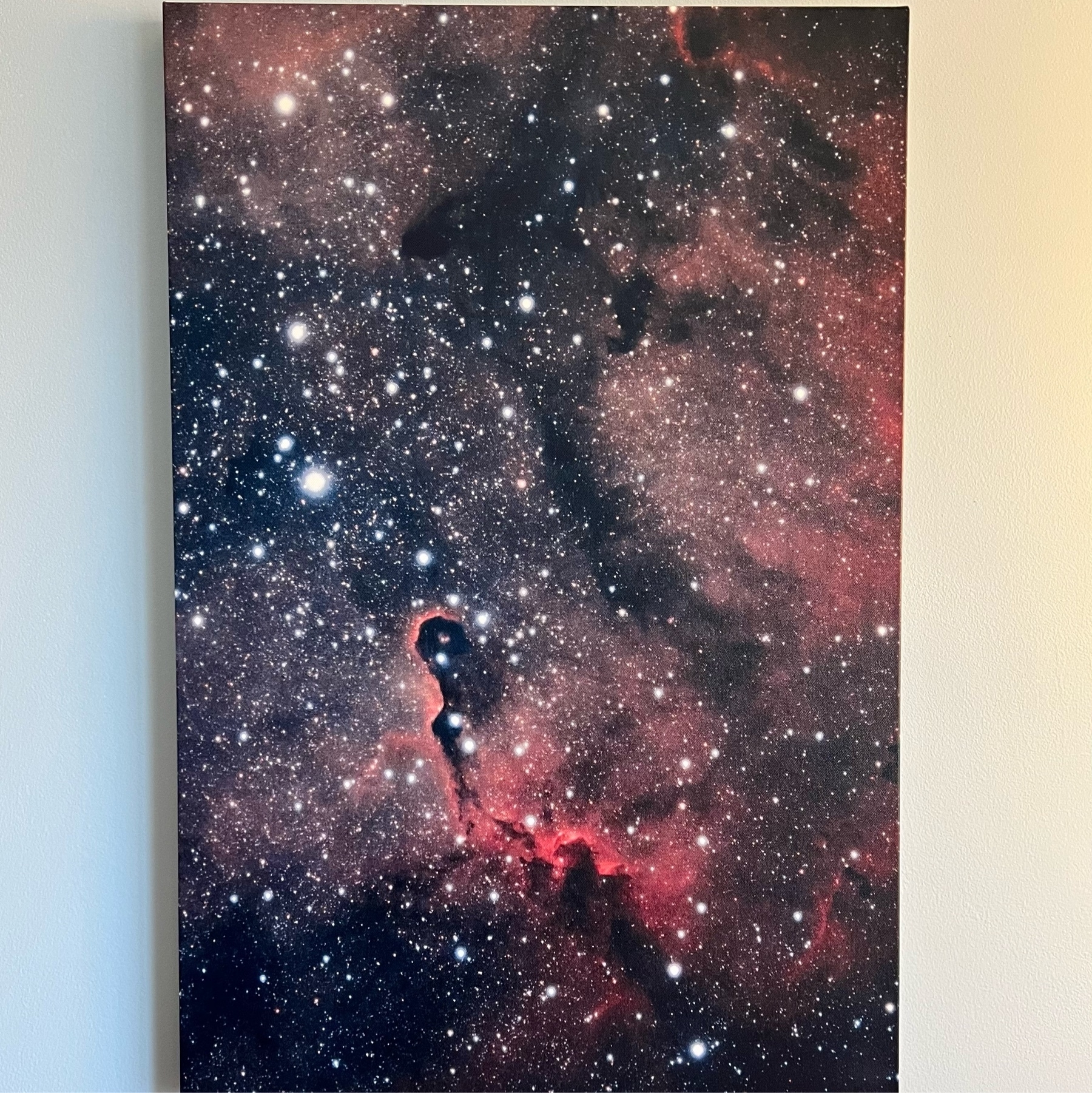
The Pleiades
The Pleiades (M45) aka The Seven Sisters aka Subaru is an open star cluster ~444 light years away. It is the nearest star cluster to us. The reflection nebulae around the young stars are left from the time of their formation about 100 million years ago.
WO ZS61; ZWO ASI533MC-Pro; 70 min (35x2m) total exp.
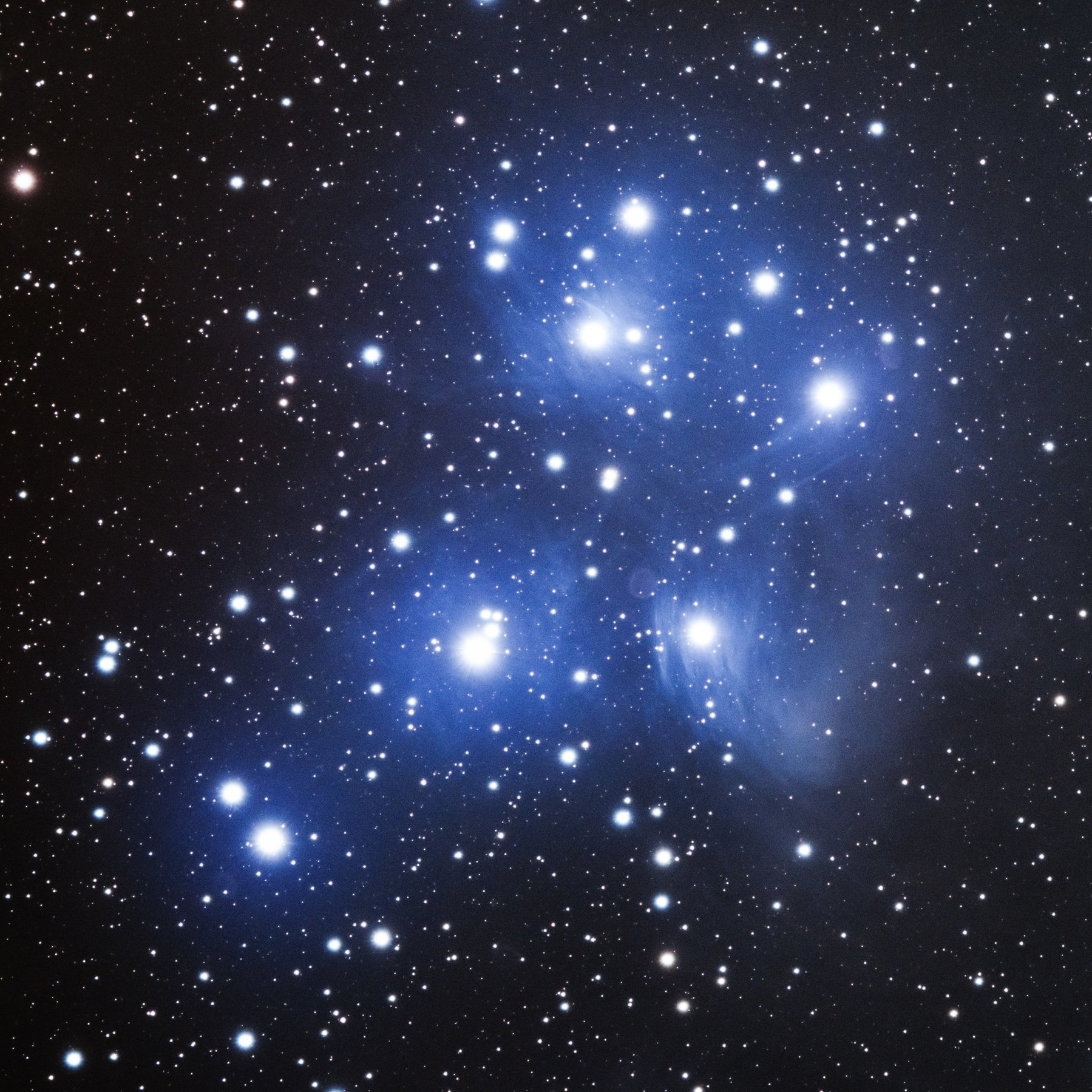
Running man and Orion nebulae
This must be my best effort at capturing the running man and Orion nebulae so far. This nebula is a region of massive star formation and is closest of such kind to Earth at ~1300 light years.
Taken with WO ZS61; ZWO ASI533MC-Pro. Only 40 one minute subs without any narrowband filter. Processed with Siril and Photoshop.
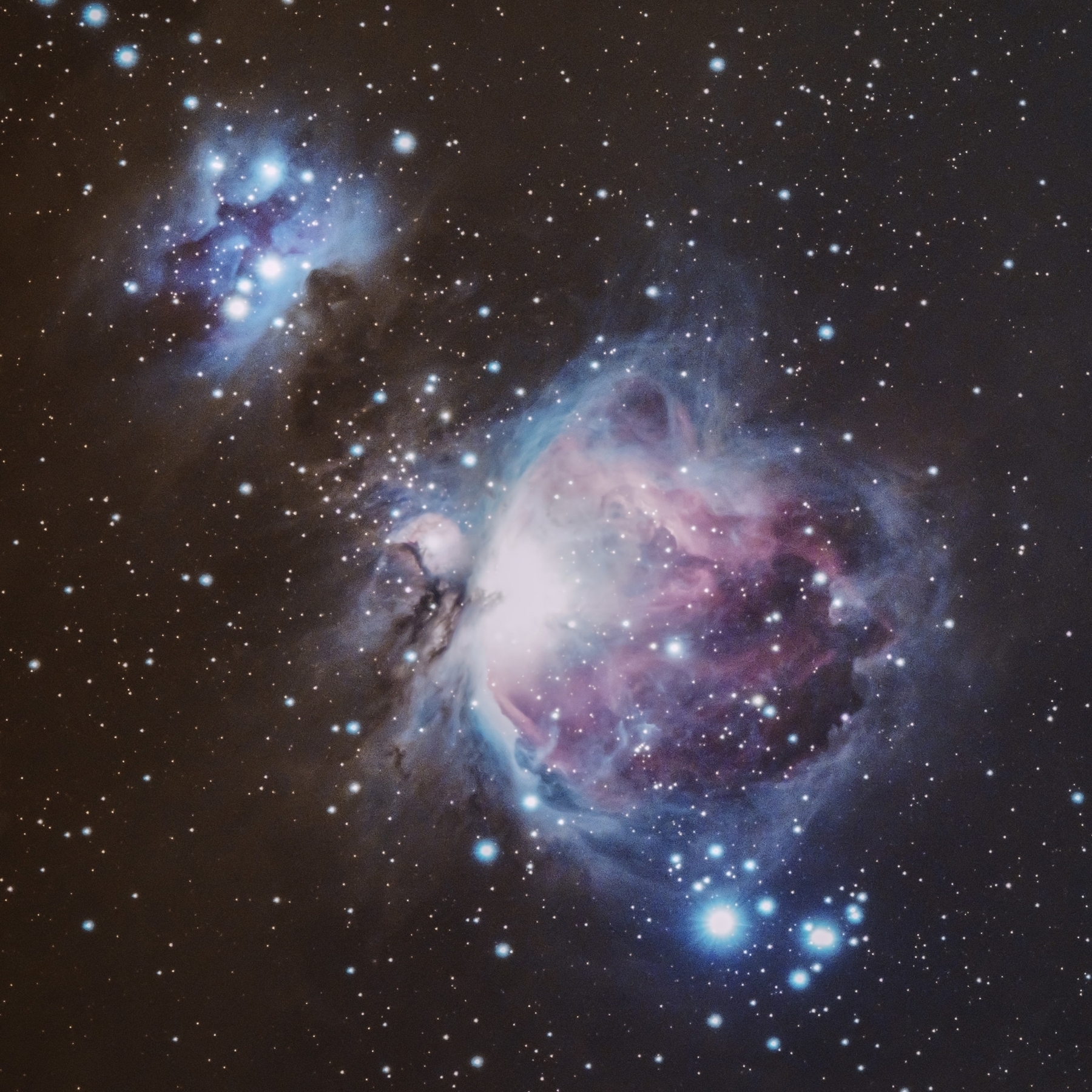
Veil nebula print
Got my Veil nebula photo printed. This is the first time for me to get an acrylic print. It was expensive but I see why that was so. It seems like the print is mounted under a clear ~4mm thick piece of plastic (acrylic?!). It looks great. Can’t wait to put it on a wall.
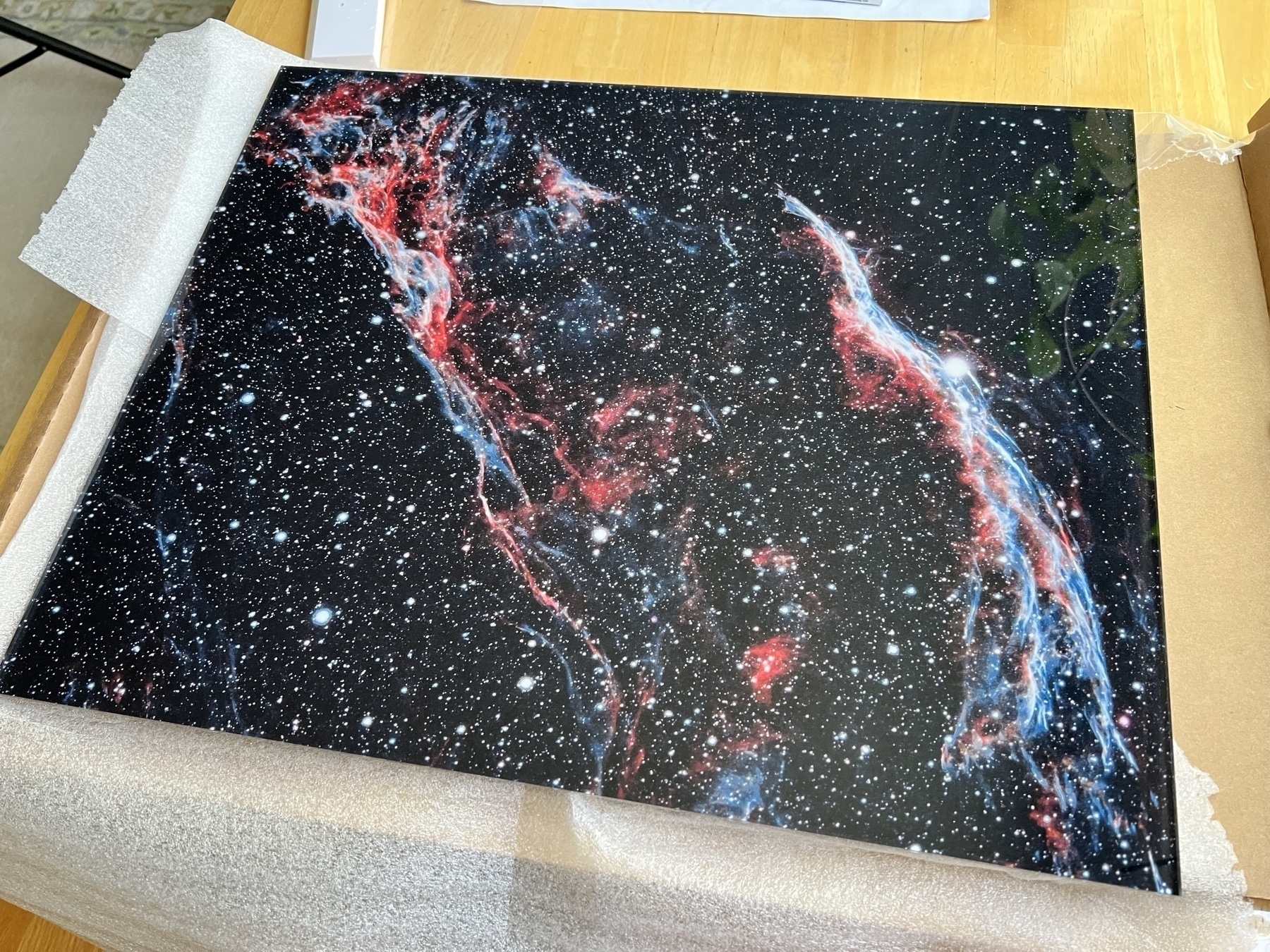
Western Veil nebula
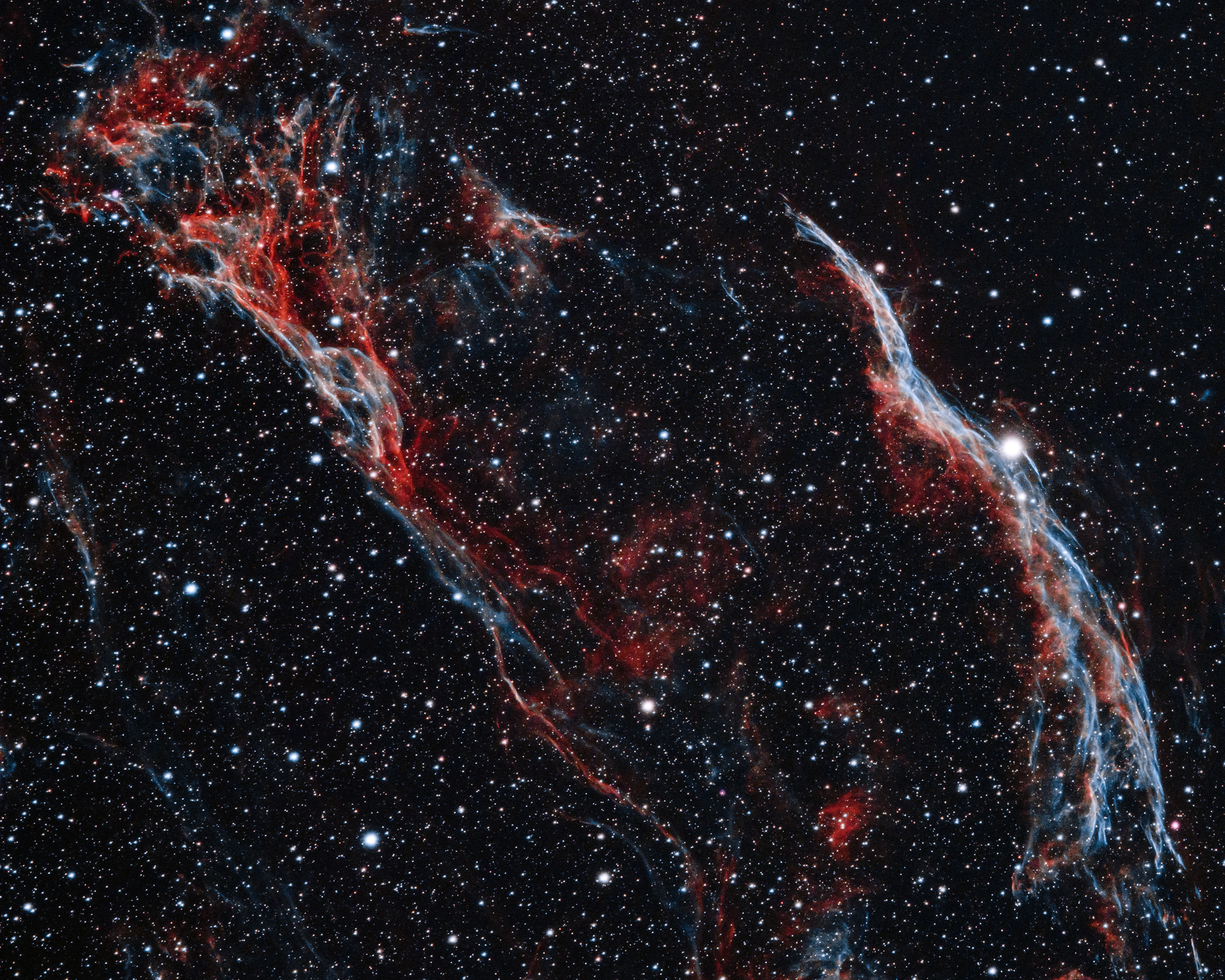
A part of the Veil nebula complex from Cygnus. This is Pickering’s triangle and Witch’s broom (NGC6960). This supernova remnant glows in Halpha and Oiii frequencies which is perfect for LeXtreme narrowband filter that selects those frequencies. I have tried this image several times before but this 4 hour exposure is the best so far. There is so much detail and color of the nebula that I couldn’t capture before.
Interestingly, the bright star near Witch’s broom, 52 Cygni is at 290 light years while the veil nebula is at almost 8 times that distance at 2400 light years. This supernova happened between 10,000 and 20,000 years ago. Anyone looking at the sky at that time probably saw a star much brighter than Venus.
WO ZS61 - ZWO ASI533MC-PRO - LeXtreme - 80 x 3 min - SIRIL - PS
Wide angle long exposure photos
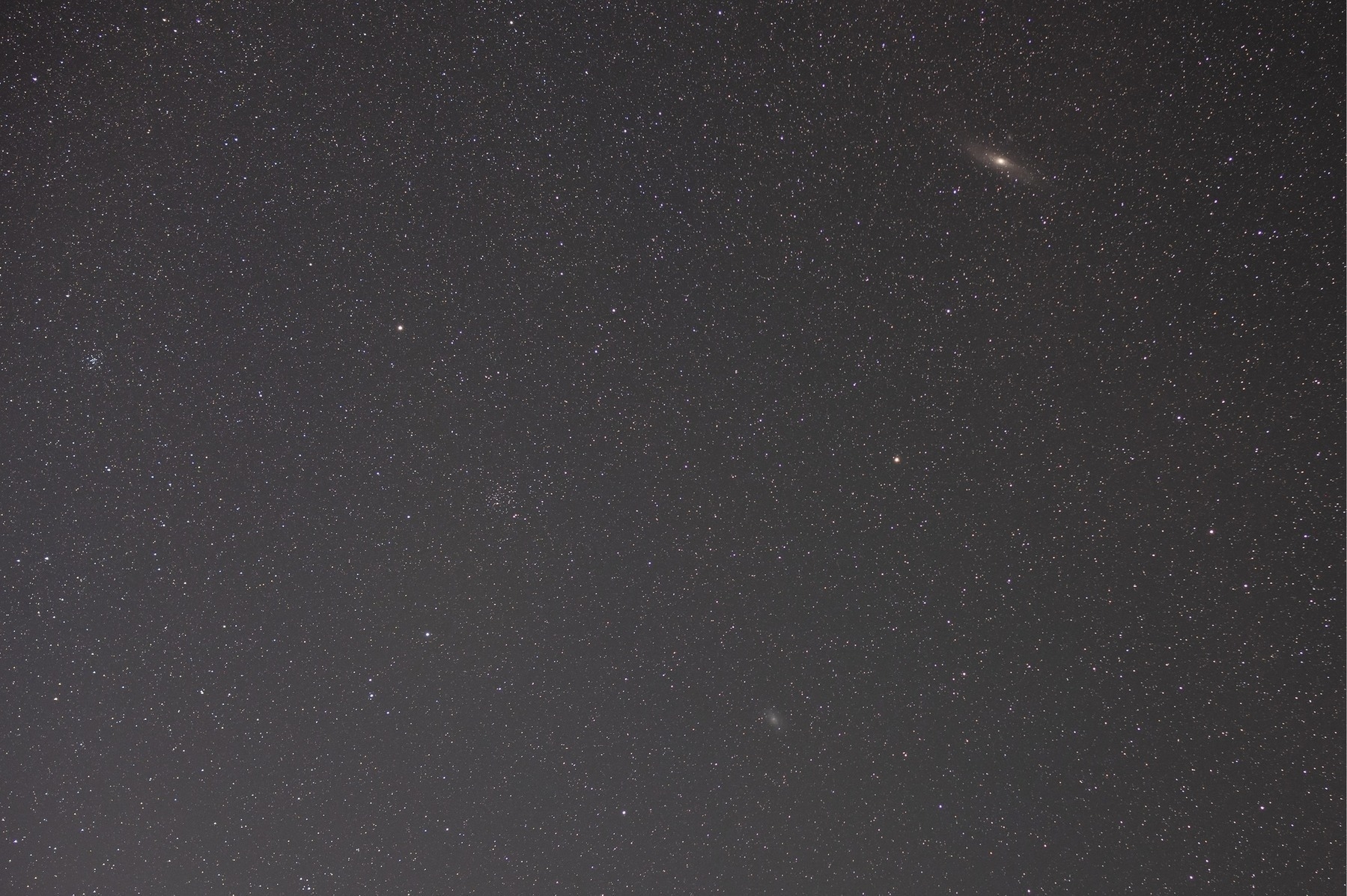
Playing with long exposure (3 mins) photos with a 40 mm lens attached to Nikon Z6 on a SkyWatcher star tracker. Here is one that shows Andromeda galaxy (M31), top right and Triangulum Galaxy (M33), bottom center. Also two open star clusters: M34 in Perseus (left edge) and NGC 752 in Andromeda (left center). This is just a single image with contrast adjustments in Photoshop, not a stack of multiple images.
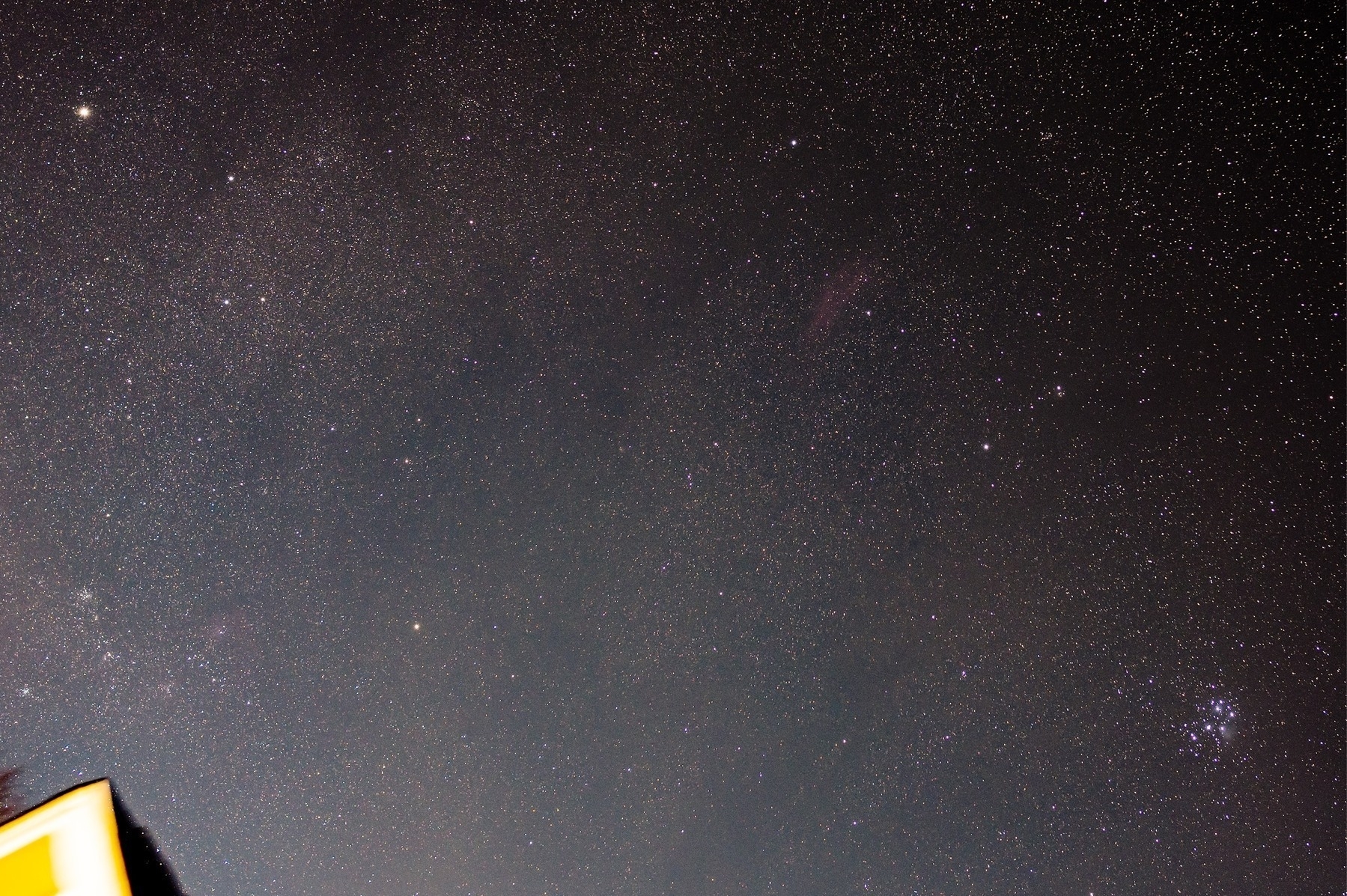
Another long exposure (3 min) photo showing Pleiades (bottom right), and ghostly reddish glow of California nebula (right of center). The bright star at top left is Capella and just above the roof, open clusters M36 and M38 are seen along with Flaming star and tadpoles nebula region in Auriga.
Bubble nebula - Nov2022
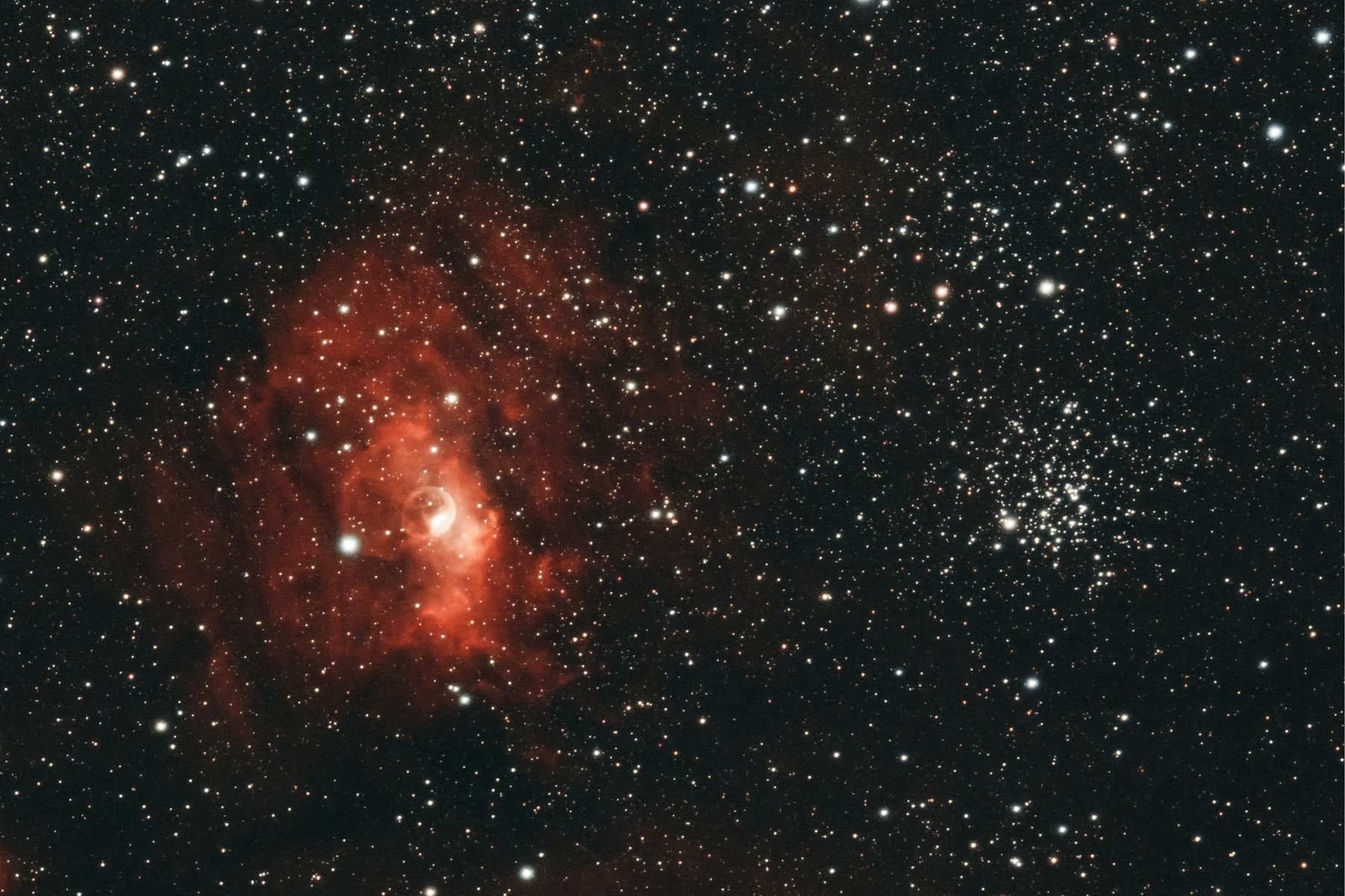
The Bubble nebula (NGC 7635) and an open cluster M52 in the constellation Cassiopeia. They appear next to each other but the nebula is ~11000 LY away while M52 is closer at a distance of only ~5000 LY. The bubble is about 10 LY across and is formed because of the intense radiation from the star inside it pushing the interstellar gas and dust.
This image consists of almost 3 hours of total exposure (35x5m). Optolong LeXtreme narrowband filter with ZWO ASI533MC-pro on WO ZS61. Processed with SIRIL and PS.
Eagle nebula - Oct2022

Eagle nebula aka Star Queen nebula (M16) in constellation Serpens, at about 7000 light years is home to the "Pillars of Creation" made famous by Hubble telescope. I always wanted to capture this but, my Southern sky is not completely open. I only get about one hour window for capturing these objects closer to the Southern horizon.
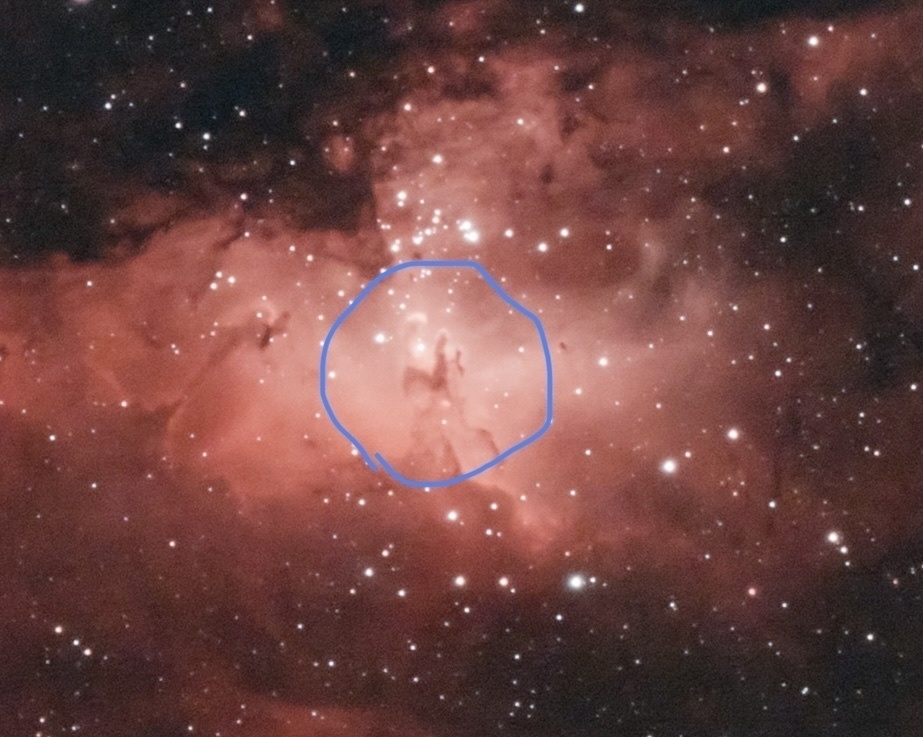
It was very satisfying to see that the "Pillars of Creation" were clearly visible in my image. The James Webb Telescope released its latest image of the pillars in midrange infrared light and it is just mind-blowing (see below). One can compare and quite obviously see the difference between a thousand dollar imaging setup and a billion dollar one. 😄
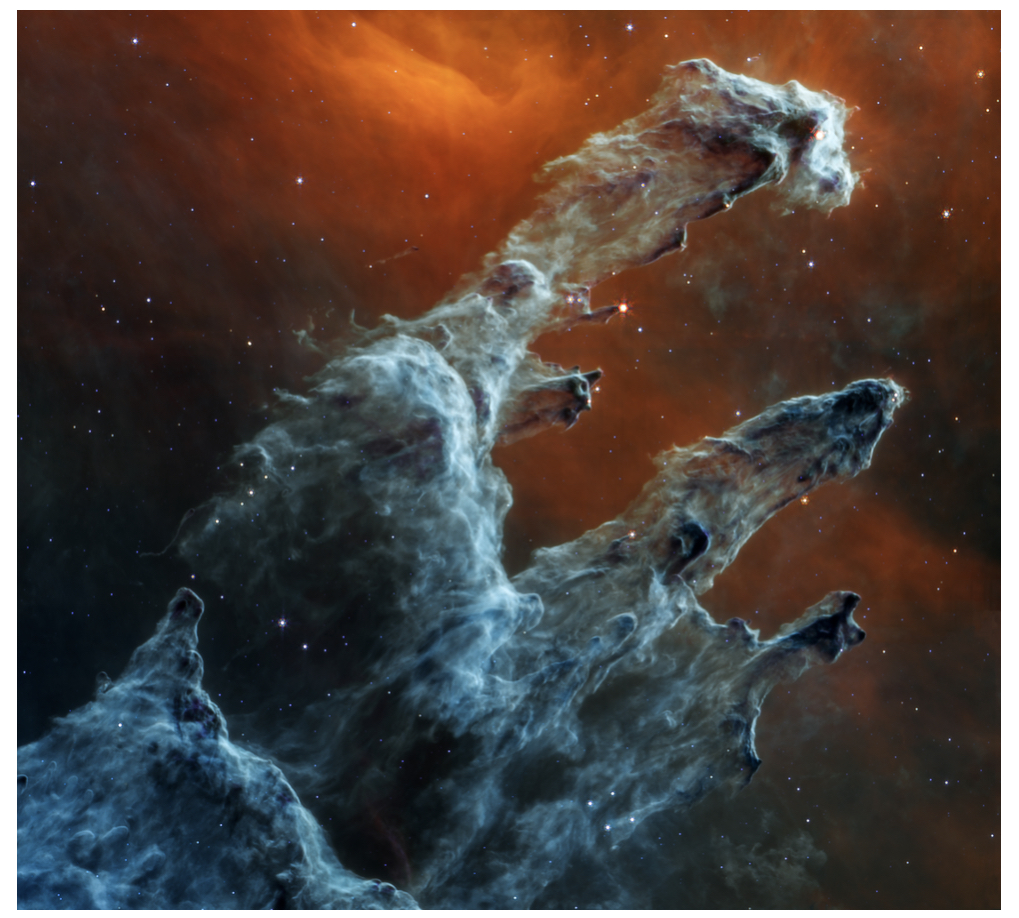
Telescope: WO ZS61
Camera: ASI533MC-Pro
Filter: Optolong L-eXtreme
Exposure: 50x1min
Processing: SIRIL and PS
Elephant trunk nebula - Oct 2022
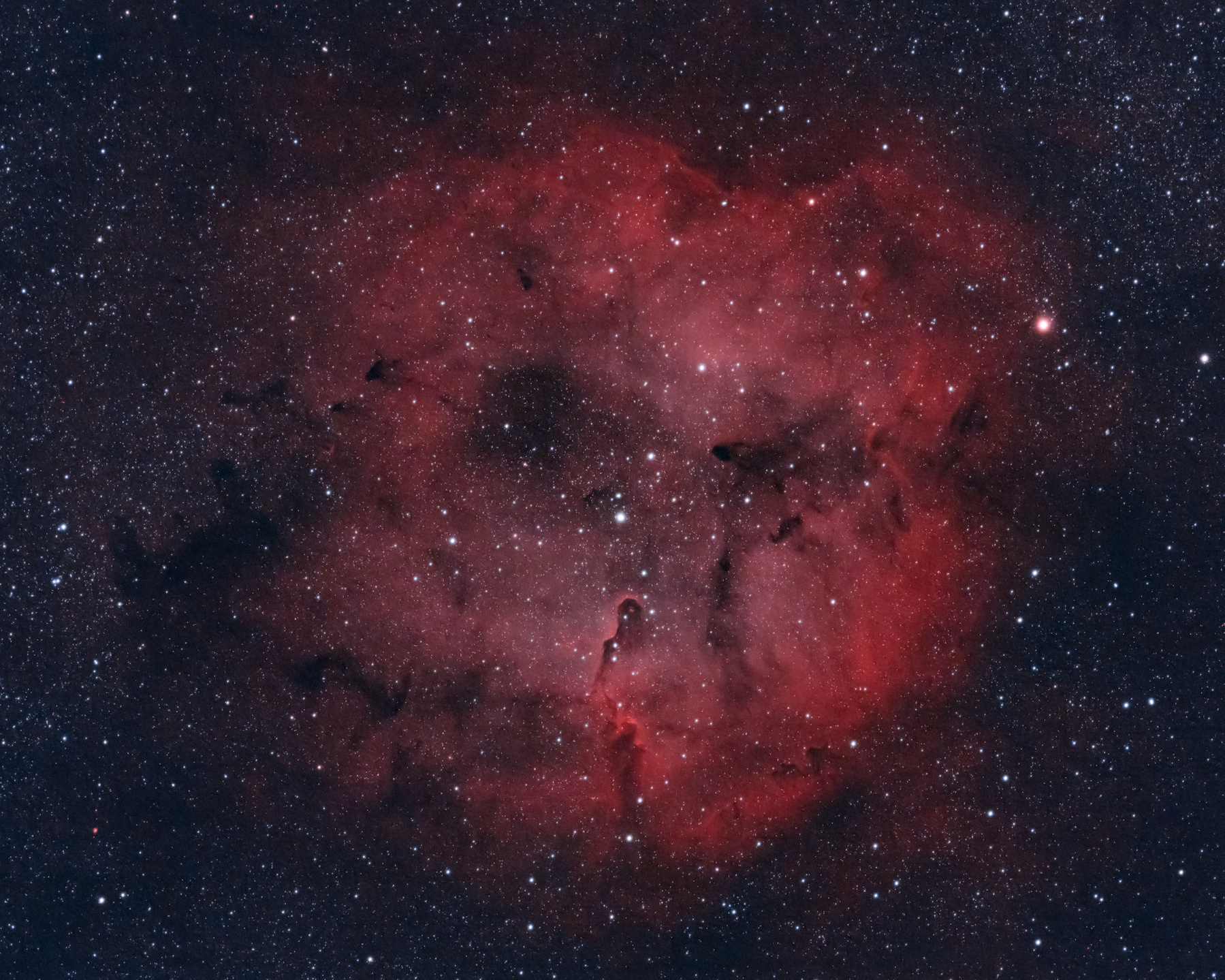
Another attempt at capturing Elephant trunk nebula (IC1396) in Cepheus. This large cloud of gas and dust is a star forming region with many 'young' (~100,000 years old) stars. Use of Nikon Z6 camera with the full frame sensor instead of the cropped sensor ASI533MC-pro astro camera, makes it a wider angle image. For comparison, here is a photo of the same object taken with the ASI camera two months ago.
WO ZS61 - Nikon Z6 - L-eXtreme - 47x5min - SIRIL - PS
Soul nebula
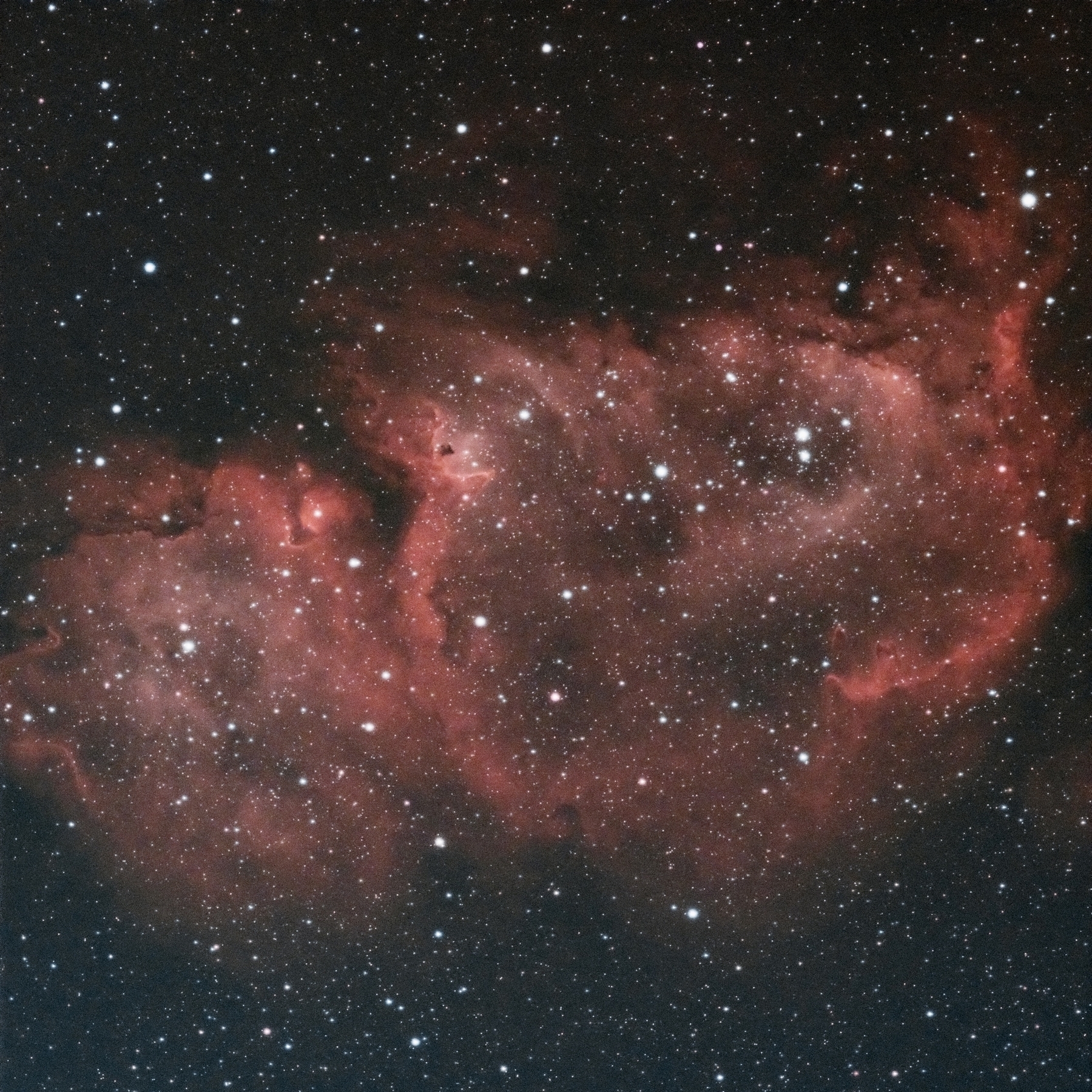
Soul nebula in Cassiopeia at about 6500 light years from us. This large emission nebula is often photographed with its neighbor - Heart nebula.
WO ZS61 : ASI533MC-pro : L-eXtreme : 47x3min : SIRIL : PS
Pelican nebula - Sep2022
Pelican nebula (IC 5070) is located in Cygnus constellation, right next to the North American nebula. This emission nebula is about 1800 light years away and is 30 light years across. In this image I was struck by the incredible detail that can be seen in the silhouetted dark dust regions.
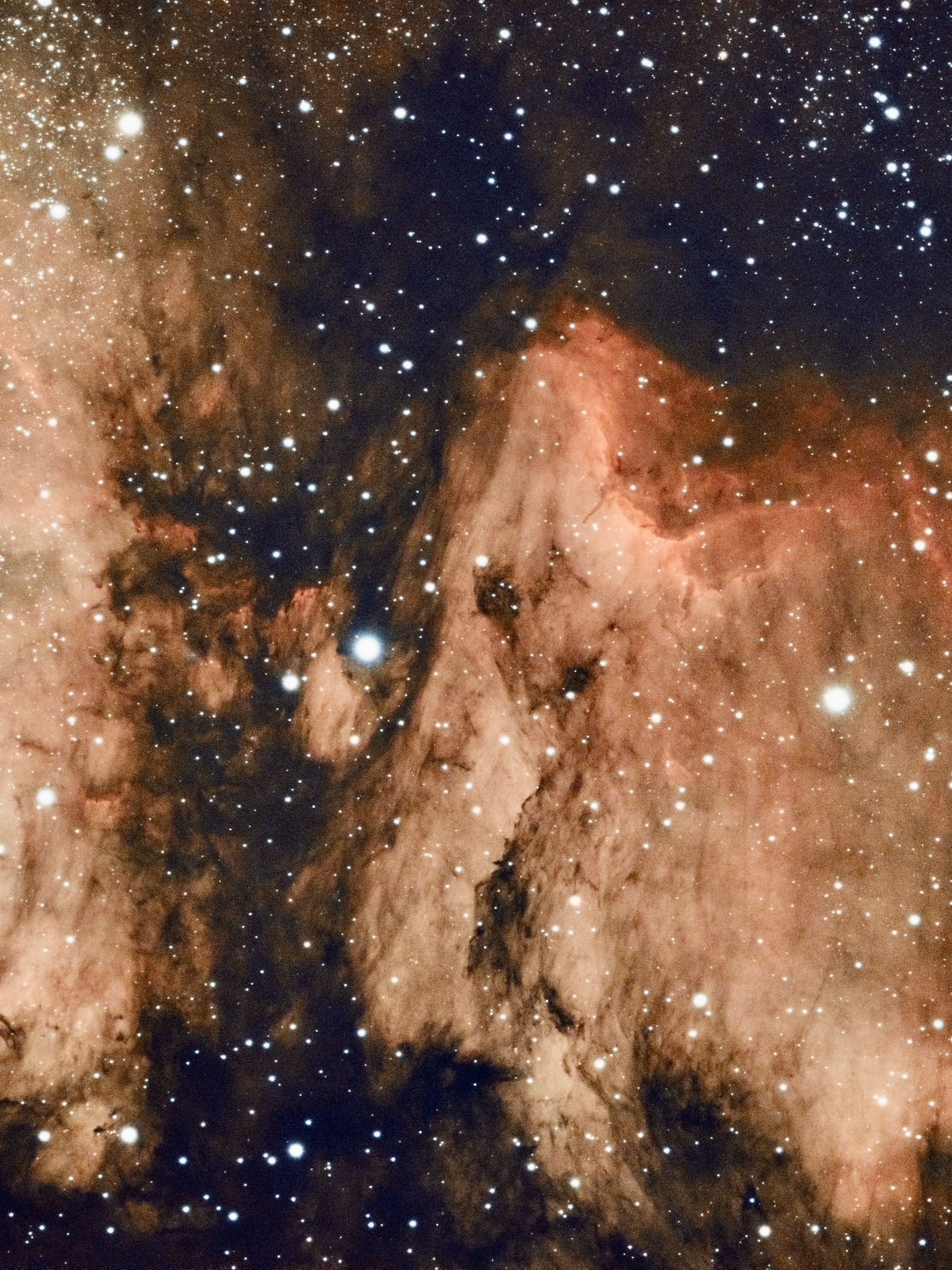
Really happy with how well the current setup is working. For auto guiding, the RMS error is consistently less than 1 arc second. This makes nice round pin-point stars even with 5 minute long exposures. The narrowband L-eXtreme filter performs very well with light suppression.
Telescope: William Optics Zenithstar 61; focal length 360mm
Optolong L-eXtreme narrowband filter
Camera: ZWO ASI533MC-pro, cooled to -10C
5 minute exposures with auto guiding; total exposure of 3 hours;
used dark, flat, bias calibration frames
Processed in SIRIL and PhotoShop
Cygnus wall

Cygnus wall is a part of the North American nebula (NGC7000) with the most concentrated star formation. The dark area on the right is interstellar dust that is obscuring our view of this whole emission nebula. I think this is my best effort so far at capturing this nebula.
This image was taken with ZWO ASI533MC-PRO camera attached to William Optics ZenthiStar 61 refracting telescope with Optolong LeNhance dual band filter. This is a stack of 30 five minute subs processed with SIRIL and PhotoShop. This image is cropped from the original. Another uncropped image of the same field of view can be seen here.
